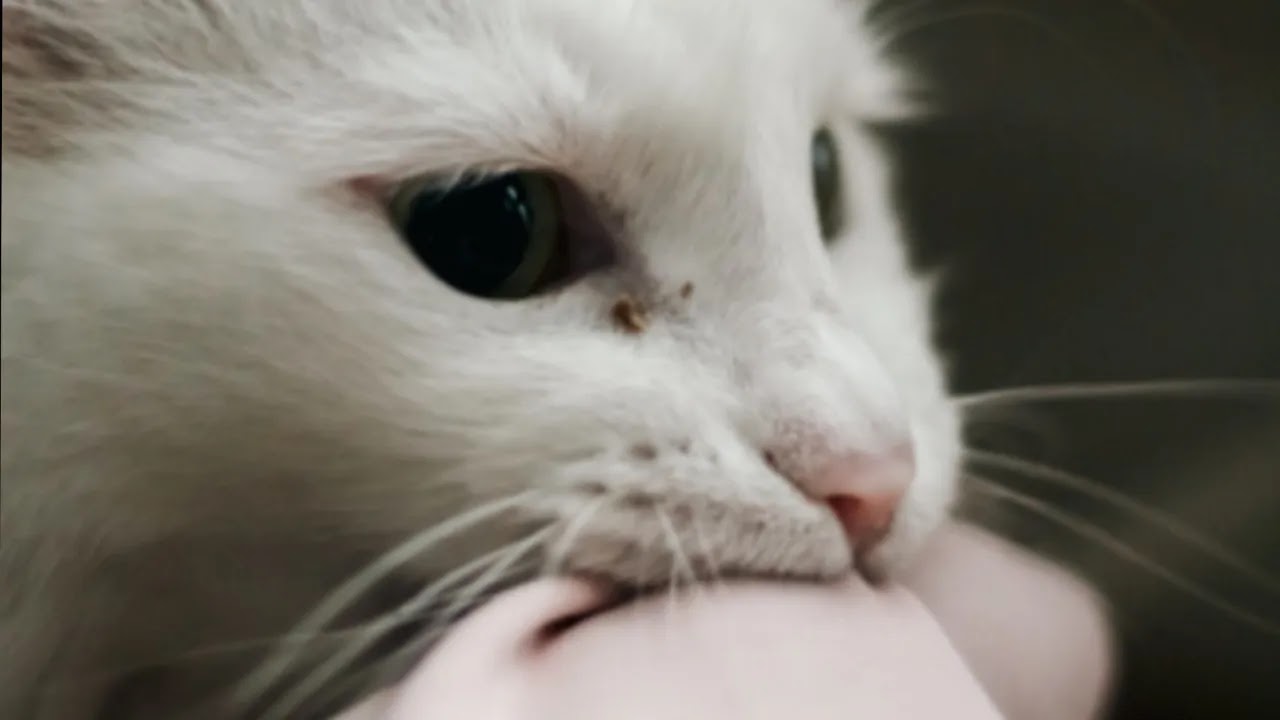introduction
Cats are beloved companions known for their independent and sometimes mysterious nature. However, it is not uncommon for cat owners to encounter situations where their feline friends bite. Understanding why cats engage in this behavior is crucial for creating a harmonious relationship with our furry friends. In this essay, we will explore the various reasons why cats bite, ranging from playfulness and aggression to medical issues and socialization problems.
 |
table about Cat Biting Behavior
| Item | Information |
|---|---|
| Playful behavior | Cats may bite during play if they become overly excited. It's their way of expressing their energy and engaging in interactive play. |
| Fear or aggression | Cats may bite when they feel threatened, scared, or cornered. It can be a defensive reaction to protect themselves or establish dominance. |
| Pain or discomfort | If a cat is experiencing pain or discomfort, they may resort to biting as a form of communication. They may be trying to signal that something is wrong or that they need attention. |
| Socialization issues | Cats that haven't been properly socialized may resort to biting when they feel anxious or uncomfortable around people or other animals. |
| Redirected aggression | Sometimes, cats can redirect their aggression towards a person or another pet after a frustrating or stressful encounter with something else, such as seeing another animal outside. |
| Overstimulation or play aggression | Cats may accidentally bite or scratch during play if they become overstimulated. It's important to recognize their limits and provide appropriate outlets for their energy. |
| Territorial behavior | Cats may bite to defend their territory, especially if they feel their personal space is being invaded by another animal or person. |
| Lack of proper training | Cats that haven't been trained to understand appropriate behavior boundaries may resort to biting as a way to communicate their needs or frustrations. |
| Medical issues | It's essential to consider that certain medical conditions, such as dental problems or underlying pain, can also lead to increased biting behavior. |
Playful Behavior
Playful Behavior: One common reason cats bite is during playtime. When cats become overly excited, they may bite as a way to express their energy and engage in interactive play. It is important to provide appropriate toys and outlets for them to release their energy, ensuring that play remains enjoyable for both the cat and their human companions.
Fear or Aggression
Fear or Aggression: Cats may resort to biting when they feel threatened, scared, or cornered. It serves as a defensive reaction to protect themselves or establish dominance. Understanding their body language and providing a safe and calm environment can help minimize fear-induced biting incidents.
Pain or Discomfort
Pain or Discomfort: Just like humans, cats may resort to biting as a form of communication when they are in pain or discomfort. Biting may be an attempt to signal that something is wrong or that they require attention. Regular veterinary check-ups and addressing any underlying medical issues are crucial to prevent biting behavior stemming from pain or discomfort.
Socialization Issues
Socialization Issues: Cats that have not been properly socialized may exhibit biting behavior when they feel anxious or uncomfortable around people or other animals. Gradual exposure to various stimuli, positive reinforcement, and patience can help improve their social skills and reduce the incidence of biting.
Redirected Aggression
Redirected Aggression: Sometimes, cats can redirect their aggression towards a person or another pet after a frustrating or stressful encounter with something else. For example, seeing another animal outside the window can trigger an aggressive response. Identifying potential triggers and providing a calming environment can help prevent redirected aggression and subsequent biting incidents.
Overstimulation or Play Aggression
Overstimulation or Play Aggression: During playtime, cats can accidentally bite or scratch when they become overstimulated. Recognizing their limits and providing appropriate outlets for their energy, such as interactive toys or scratching posts, can minimize unintentional biting during play sessions.
Territorial Behavior
Territorial Behavior: Cats are known for their strong territorial instincts. They may resort to biting to defend their territory, especially if they perceive their personal space is being invaded by another animal or person. Respecting their boundaries and providing suitable resources, such as separate feeding areas or hiding spots, can help reduce territorial aggression.
Lack of Proper Training
Lack of Proper Training: Cats that have not received proper training to understand boundaries and appropriate behavior may resort to biting as a means to communicate their needs or frustrations. Positive reinforcement training methods can help teach cats alternative ways to communicate and express themselves.
Medical Issues
Medical Issues: It is essential to consider that certain medical conditions can contribute to increased biting behavior. Dental problems, underlying pain, or discomfort from various illnesses can make cats more prone to biting. Regular veterinary care and addressing any medical concerns promptly are vital to maintain a cat's overall well-being and reduce biting incidents.
Conclusion
Understanding the reasons behind biting behavior is crucial for cat owners to foster a harmonious relationship with their feline companions. By addressing the underlying causes such as playfulness, fear, pain, socialization issues, redirected aggression, overstimulation, territorial behavior, lack of training, and medical problems, cat owners can take appropriate measures to prevent or manage biting incidents. Patience, positive reinforcement, and seeking veterinary advice when necessary are key elements in creating a safe and nurturing environment for cats to thrive.
References
- Overall, K. (2013). Manual of Clinical Behavioral Medicine for Dogs and Cats (1st ed.). Elsevier Health Sciences.
- Beaver, B. V. (2019). Feline Behavior: A Guide for Veterinarians (3rd ed.). Elsevier Health Sciences.
- Landsberg, G., Hunthausen, W., & Ackerman, L. (2012). Behavior Problems of the Dog and Cat (3rd ed.). Elsevier Health Sciences.

